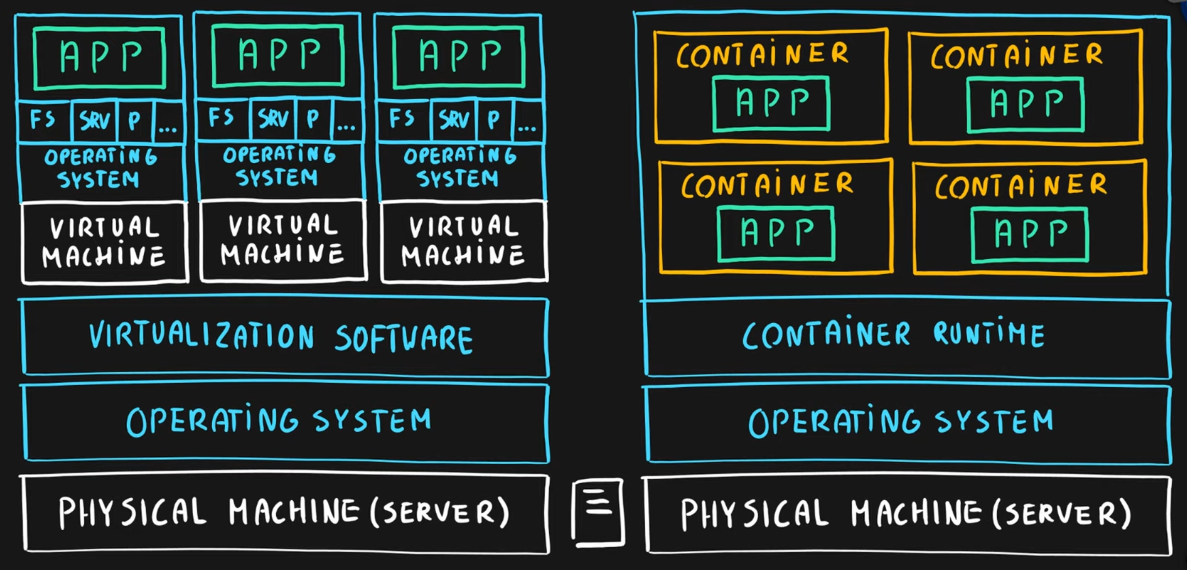Types of Virtualization
Virtualization
Emulation of physical hardware
Allows to create different virtual hardware based on machine/app requirements
Allows to install different OS per machine/app
Each VM is independent system and has its own Filesystem, services, storage, etc.

Hypervisor
Manages the distribution of physical resources of a host machine (server) to the virtual machines (guests)
Type 1
Also called Bare-metal/ Native Hypervisor
More efficient that Type 2 hypervisors
e.g. VMware ESXi, Hyper-V, Xen Server
Type 2
Also called Hosted Hypervisor
Runs from within an OS
e.g. VirtualBox, VMware, Parallels
Containerization
A single OS kernel is shared across multiple containers but each container receives its own user space for programs and data
Threats to VMs
VM Escape
Attacker breaks out of normal isolated VM and can interact directly with the hypervisor
Extremely difficult to perform
Privilege Escalation
User is able to grant themselves the ability to run functions as a high-level user
Live Migration of Virtual Machines
VM needs to be moved from one physical host to another
Resource Reuse
System resources like memory and processing power are reused
If the resource is not properly cleared or reset before being use by another VM sensitive data could be leaked
Securing VMs
Keep virtualization software up-to-date
Reduce connection between the guest systems and host
Reduce and remove unnecessary features
Distribute VMs across multiple physical servers
Reduce Virtualization Sprawl (Unmanaged deployment)
Encryption of VM files